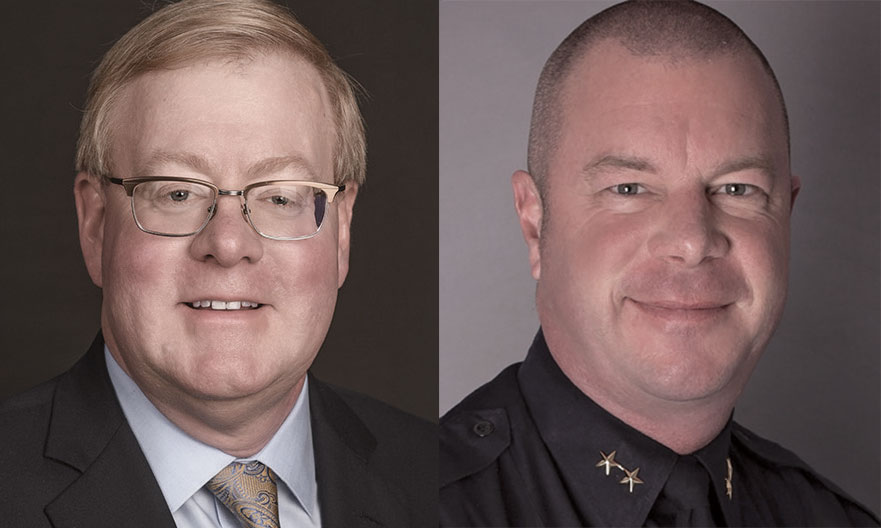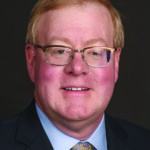
It’s time for EMS to take the lead in making sure our healthcare partners know who we are.
By Jeffrey M. Goodloe, MD, NRP, FACEP, FAEMS, and Bryan Jones, NRP
Have you ever left the hospital after bringing a patient to the emergency room, turned to your partner, and said, “I don’t think the doctor listened to a word I said”? Or maybe left a meeting with hospital administrators and thought, “They don’t understand what we do”?
If you’re an EMS leader or practitioner, there’s a good chance you have. Our profession has often expressed frustration at feeling disrespected or being left out of the healthcare conversations—in our communities and at state and national levels. It’s rarely an intentional snub to EMS, but instead the result of ignorance. If you don’t know what you don’t know, then how do you know? And who else will teach our healthcare partners besides us?
Any time we can share the success of EMS, or even help to educate about the challenges we are working to overcome, and we hear a response of, “I had no idea you do that in EMS…” then that’s another win for helping someone better understand and better appreciate the important role of EMS in the healthcare continuum. Our profession is still relatively young, which might mean people don’t understand us—but also means we have a great opportunity to still tell our story and shape our healthcare partners’ views of prehospital practitioners. Here are just a few steps we all can take to make that happen.
EARN RESPECT. When other healthcare professionals—clinical or administrative—think of EMS, what are some of the first words that come to their minds? Words such as approachable, collaborative, insightful, thoughtful, team-oriented, caring and open-minded are all indicators we’re on the right track. And frankly, making sure those words come to mind is work; it doesn’t just happen. We have to remember that how we act is about more than the current moment or this is actually pretty simple, but it also happens to be uncomfortable. We all like to be liked and appreciated. To be certain, all of us have at least some folks in our communities who are grateful for EMS.
Sometimes that includes all the local emergency physicians, emergency nurses and hospital administration leaders. But sometimes it doesn’t. Maybe it’s because their attitudes and actions aren’t right. Hmm. Maybe it’s because our attitudes and actions haven’t always been right. Gulp.
First, whether it’s a happy situation or a tense situation, we need to be realistic about what the situation is. Likely, it’s not all bad… or all good. So, there’s room to improve for all of us.
BUILD RELATIONSHIPS. Part of getting a seat at the table is simply showing up and taking one. While most emergency physicians and nurses under-stand that EMS practitioners are more than just ambulance drivers, that isn’t as true throughout the rest of healthcare. Want to show how critical you are to improving outcomes for cardiac patients? Invite your department to the next hospital cardiac quality improvement meeting. Show up in uniform, pay attention and ask questions. Not only will this simply show that EMS cares about, and plays a role in, the quality of patient care, it also will help you build critical relationships with your community’s healthcare leaders.
Another thing about these relationships: focus on what you can do for the patient and the healthcare partner, not what it means for EMS. A wise man, Zig Ziglar, was fond of saying that you can have every-thing in life you want if you will just help enough other people get what they want first. There’s a lot of wisdom in that saying. It gets to that relational aspect of talking with others we mentioned earlier.
For example, offload delays at the ED might impact your units’ availability, your clinicians’ satisfaction and your response times—and that’s all important. But start the conversation by acknowledging that the hospital isn’t trying to hurt you and is likely dealing with patient flow issues that they aren’t happy with either. Ask how you can help them address those problems in a way that might achieve both of your goals. And focus on making a positive impact on the health of patients and the community, a goal that every healthcare leader can understand and rally behind. You’ll know you’ve succeeded when hospital administrators start calling you to ask how policy changes they are contemplating would impact your operations.
GET EDUCATED. We can’t overvalue the importance of education. Part of it is simply about respect—for better or worse, our colleagues in healthcare will likely respect us more if we have more letters after our names. But it’s much more than that. We’ve done a great job of teaching EMTs and paramedics when and how to provide important treatments in the field, but we’ve struggled when it comes to teaching them how they fit into the bigger picture of healthcare, and how to communicate and work with healthcare partners. Encouraging EMS practitioners to expand their knowledge into other areas—public health, business administration, research and more—will also help build bridges.
And then there’s less formal education, which, unfortunately, has become harder to get. Decades ago, the first EMS clinicians spent much of their time learning from physicians and nurses, shadowing them in hospitals. While it’s fantastic that we now have a robust EMS education system, with trained EMS educators leading the way, we’re losing those natural inter-relational opportunities because we’re no longer in the same building. Solutions to this can be small, such as finding ways for EMS practitioners to spend a few hours shadowing nurses, physicians and other clinicians, and offering EMS ride-alongs in return. Or they can be more significant, such as medical schools that require first-year students to become EMTs and work on ambulances.
TALK THE TALK. We’re really good in EMS at talking the language of our public safety partners—and that’s absolutely critical, as we work on scenes with them every day. But where we need to improve is in talking like healthcare professionals within larger health and hospital systems. Attending those hospital quality meetings or board meetings can help you learn what outcomes they are looking at, how they measure them and how they communicate about them. It’s not just the terminology, but the data—no longer is it sufficient to just tell them you impact their door-to-needle times for stroke patients. EMS must be able to produce data in a valid, reliable way that can be understood by the rest of healthcare.
That doesn’t mean you always have the answers right away—it’s okay to say you’ll need to go fi nd them. But having the infrastructure to get the data you need in order to have those conversations is absolutely vital.
We’ve seen an increased recognition of the role EMS can play in a community since the first ambulance crew transported a patient with the novel coronavirus more than a year ago. But that means it’s even more important to keep that momentum going as we, hopefully, move past this pandemic and can once again focus on the numerous ways we help care for our communities. Being an integrated part of the healthcare system takes meaningful action on our part. To get our seat at the table, we can’t just wait for an invitation or complain about being left out—it’s time to pull up a chair and show why we belong.
 DR. JEFFREY M. GOODLOE is chief medical officer for the EMS system for metropolitan Oklahoma City and Tulsa and also a professor of emergency
DR. JEFFREY M. GOODLOE is chief medical officer for the EMS system for metropolitan Oklahoma City and Tulsa and also a professor of emergency
medicine and section chief of EMS in the Department of Emergency Medicine at The University of Oklahoma School of Community Medicine. He is also a member of the American College of Emergency Physicians Board of Directors.
 BRYAN JONES is chief of support services for the Emergency Medical Services Authority, which provides prehospital care in Oklahoma City and Tulsa. In his three decades in EMS, he has served in many roles, including critical care medic, operations supervisor, clinical educator and flight paramedic.
BRYAN JONES is chief of support services for the Emergency Medical Services Authority, which provides prehospital care in Oklahoma City and Tulsa. In his three decades in EMS, he has served in many roles, including critical care medic, operations supervisor, clinical educator and flight paramedic.
